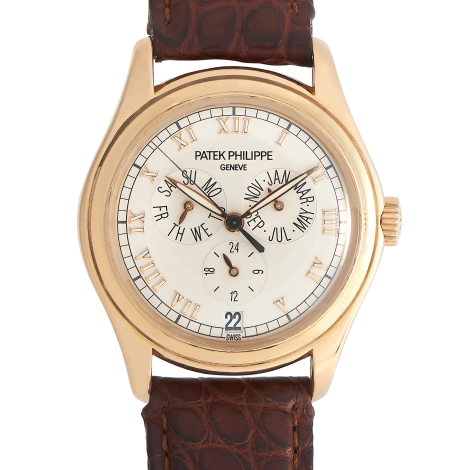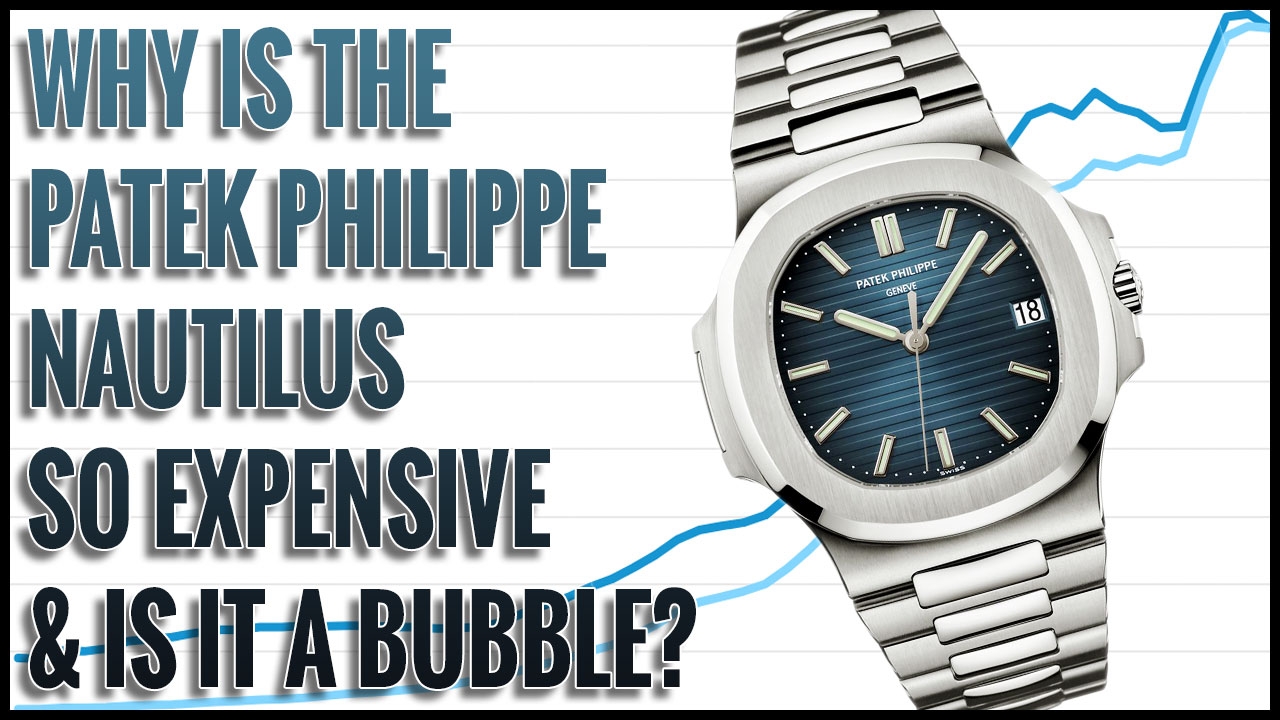Patek Philippe
Section 1 - History

Patek Philippe is universally recognized as The New King of horology, and as a member of the “Holy Trinity of Watchmaking”.
The company was founded in Geneva by a Czech-born Pole, Antoni Patek, together with a French watchmaker, Adrien Philippe, in 1845. It assumed the Patek Philippe name in 1851.

The company started in the best of ways: in 1851, none other than Queen Victoria of Britain acquired one of their pieces, something that made the young company very famous and in very high esteem throughout Europe. So much so, that nobility flocked to Patek Philippe to commission the most precious of timepieces.
Famously culminating in the creation of one of the first wristwatches in history for the Countess Koscowicz of Hungary.
Ten years later, the company registered the famous Calatrava cross as their trademark, and became publicly traded in 1901, while still run by the Philippe family; it was bought by the Stern family - owners of a dial-manufacturing company - during the Great Depression. The Stern family, now in its third generation, remain the current owners of Patek Philippe.
The spirit of the company can be condensed to its most famous slogan: "You never actually own a Patek Philippe. You merely look after it for the next generation." Patek Philippe watches are legacy timepieces. They are made to be passed down through generations. The watchmaker specializes in highly complicated timepieces, and its watches fetch amazing prices at auctions worldwide.
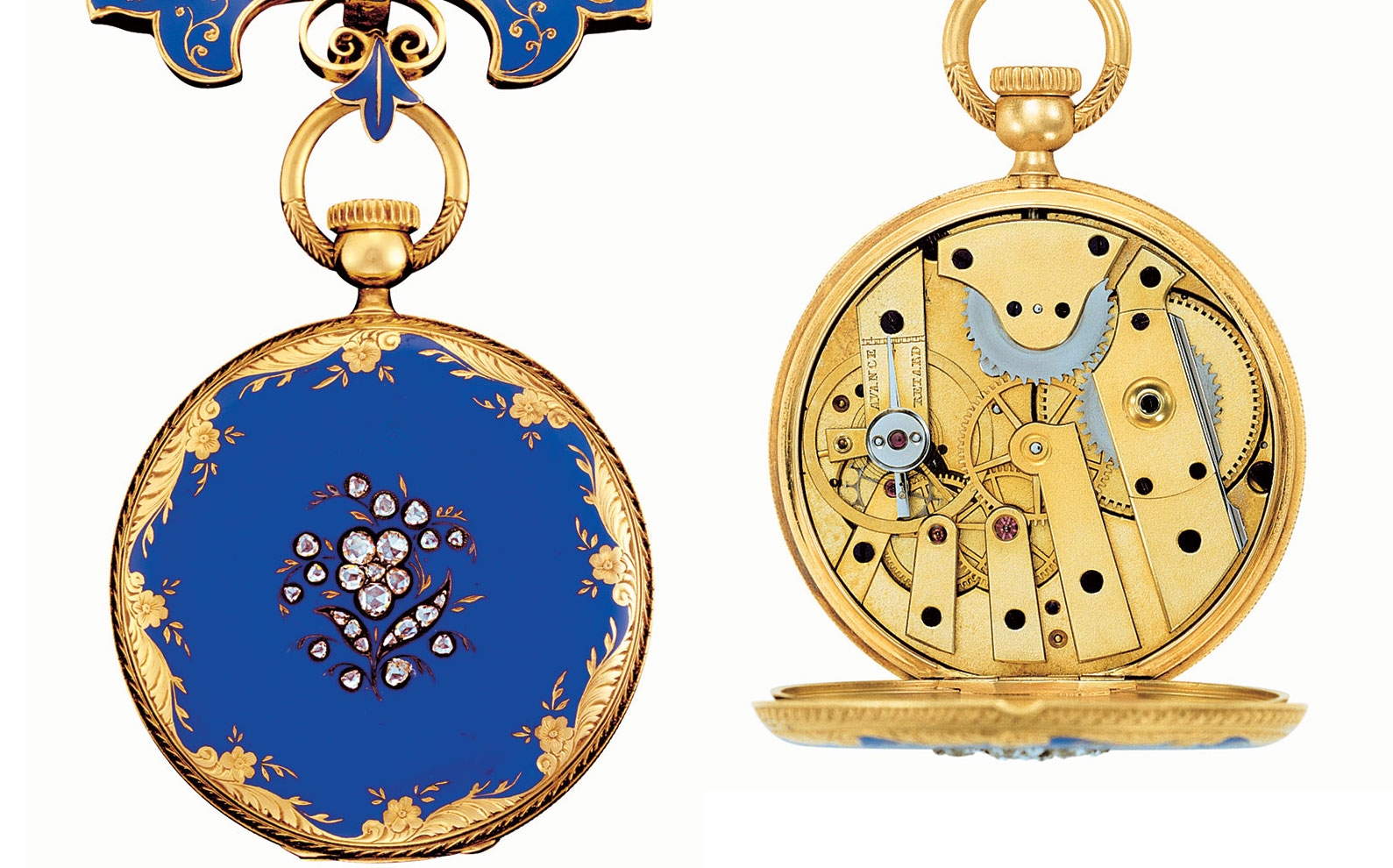
The company has always been maniacally attentive to quality. It manufactures its own components internally, both mechanical and quartz based.
In 2009, it announced that all of its watches would bear the “Patek Seal”, which requires a precision of what is called a “superlative chronometer”.
The company has created and patented several innovations in watchmaking, most of them related to highly complicated functions.
In 1881 it patented its precision regulator; in 1889, it patented a perpetual calendar mechanism; in 1902, a double chronograph; in 1923, the first split-second chronograph. And in 1923, it created the “Supercomplication”, the most complicated watch in the world, for the American tycoon Henry Graves III. The watch had 24 complications, and it was recently sold at auction for $24 million, making it the most expensive watch sold at auction on the planet.
In 1932, Patek Philippe was also the first company to market a worldtimer watch, invented by Mr. Cottier at the end of the Twenties. Other technical feats regard the creation of innovative balances, balance springs and escapements, placing the company firmly at the forefront of research in horological matters and innovation. So, if you think that Patek is just tradition and decoration, think again.

Section 2 - Iconic pieces
1 - Nautilus line
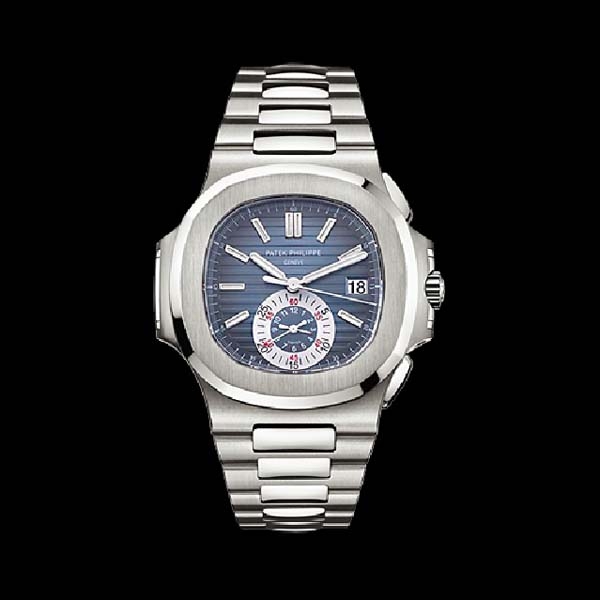
If you are talking about Patek, the first model that comes to mind is the iconic Nautilus. In 1976, after the introduction of the Royal Oak by Audemars Piguet, Patek Philippe decided it was time to enter into the same field.
So, it asked Gerald Genta, the designer of the Royal Oak, to provide a luxury sports watch for Patek, resulting in the creation of the Nautilus- which proved a resounding success for the company.
The original Nautilus collection became an all-star of the company’s lineup, and definitely introduced the stainless steel sports luxury watch into the realms of haute horology. The current Nautilus craze, fueled by the scarcity of references on the second-wrist market over the last ten years, have driven the prices through the roof, reaching almost unattainable heights.
The original Nautilus, called Jumbo (ref. 3700) and the current one (ref. 5701-5702), released in 2006 for the 30th anniversary of the introduction on the market, are among the most sought-after timepieces in the world, and are sure to attract the attention of every watch fan out there.
Other than the original stainless steel versions, the collection retains its unique look and timeless charm even when interpreted in precious metals like gold and platinum, and gemstones. In the collections you would find anything, from the simple two and three hands to chronometers and perpetual calendars.
2 - Aquanaut line
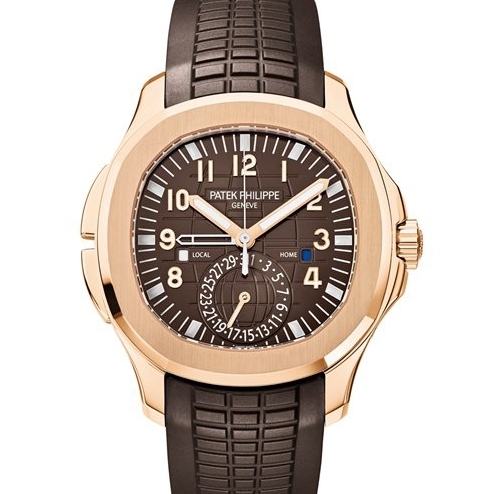
The Aquanaut is a development of the Nautilus line introduced by the watchmaker in 1997. The design is clearly inspired by the original reference, but the bezel is bigger and rounder - design elements that are shared by other details of the watch such as the crown guards and lugs, to give it a more curvaceous and modern appearance.
The Aquanaut appears as a more carefree version of the Nautilus, also made for water-related activities - hence the “Aqua-“denomination. As a note, both the Aquanaut and the Nautilus share the same kind of water resistance, 120 meters, and the same movement, making them perfect for this kind of activity.
And the Aquanut is reinforced by the use of a special high-resistance rubber material for the wristband, giving the timepiece a more relaxed fit.
The Aquanaut line also offers some very interesting complications, such as the ability to display a second time zone and a chronometer.
3 - Calatrava line

On the opposite end of the Nautilus, we find the Calatrava, which is the purest expression of the dress watch.
The Patek Philippe Calatrava’s name derives from the symbol of Patek Philippe, the Calatrava Cross, which was used as a symbol in the Medieval age. The earliest reference to it comes from the “Military Order of Calatrava” founded by Don Sancho III, King of Castile (1157-58). The Calatrava has always been the “gold standard” against which other companies measure their offerings.
The line was introduced in 1932, inspired by the Bauhaus design - whose tenets included the “less is more” mentality. And this precious timepiece precisely embodies that philosophy. From its introduction, its clean, easy, and understated round shape has graced the wrist of many watch lovers to accompany their most important formal moments.
The Calatrava models, while being quite similar at first sight, each differ in subtle ways. Some display plain dials, while others offers guilloched dials, and the hourmarks can vary from having just the hour batons to Arabic or Roman numerals.
The sizes, as it was usual in the era, are almost always small, averaging 34 mm, making the Calatrava a perfectly balanced and very elegant timepiece that looks as distinguished as it is understated.
4 - Gondolo line
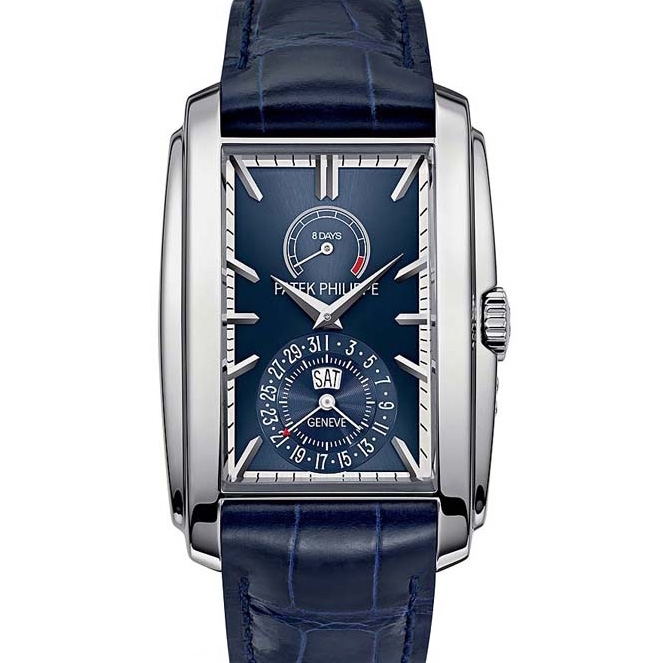
The Gondolo line is a very recent design by watchmaker standards, hailing back to only 1993, but the flair distinguishing the collection stems directly from the Art Deco inspiration of the Twenties, and renders homage to a historical figure who was very important in Patek’s history: the Brazilian watch dealer Gondolo & Laboriau, head of a cooperation which began in 1872 and lasted for 55 years.
So, the Gondolo collection features watches with the typical design features of those times: cases that are carré or pillow-shaped, and exclusively made in precious materials like gold and platinum. Apart from these guidelines, you may find some quite different watches in this collection, making it quite varied.
The watches in this line also excel on the movement side: they feature an amazing array of charming complications, which are bound to tempt even the most jaded watch collectors; like jumping hours, moon phases and annual calendars. They represent the perfect alternative to the Calatrava line for an elegant dress watch - with a lovely, unexpected twist.
4 - Complications and Grand Complications lines
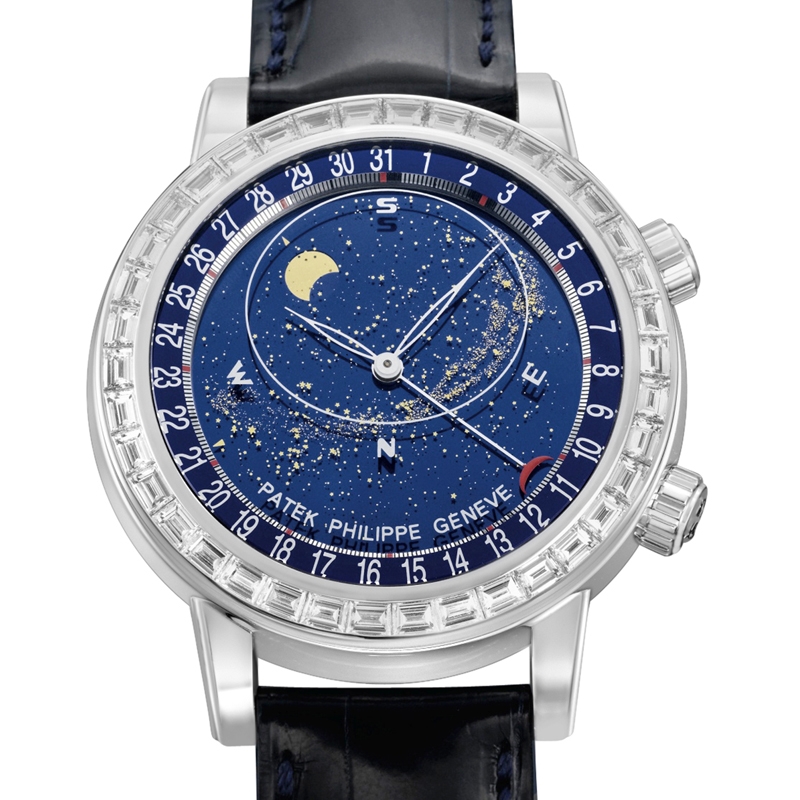
These collections represent the topmost collections from the watchmaker. There is no single detail that is overlooked, these are the main products on which the excellence and the accountability of the company is based.
As we have said, Patek Philippe has always enjoyed a reputation as a manufacturer of fine complications, and all of these lines feature some of them. All of these together in the Grand Complications collections.
Minute repeaters or chimes—grande and petite sonnerie— together with perpetual calendars and chronographs, both single and rattrapante, often complemented by fascinating tourbillons, make up the bulk of this amazing collection.
The level of artistic finish is on the same level as the entirety of their horological legacy: the cases are impeccable, in precious materials, hand-finished, decorated and guilloched, and often adorned by precisely cut gemstones, for a classical design that is always elegant and renders these timepieces the perfect companions for the most discerning gentleman.
Section 3 - News

The news is in every watch-lover’s ear.
There are whispers that the New King might be for sale. According to analysts at Berenberg who cited industry talk, Patek Phillipe may be about to change hands after being owned by the Stern family for over a century. Their valuations place the brand at a market price of 8 to $10 billion.
“It was interesting to hear in the corridors of the Geneva watch salon that a potential sale of the high-end watch brand Patek Philippe could be approaching soon,” the analysts wrote, noting that it could be just a rumor.
A Patek spokeswoman, after the news hit the press, stated that it is a rather common occurrence during the annual watch fairs in Switzerland, including the Geneva show, to hear such rumors.
But for sure, there are potential buyers which are ready to sprint into the deal, specifically, the big groups active in horology and luxury products, like Swatch, LVMH, Richemont and Kering, plus one outsider, which is Rolex.
“We understand that one of the largest conglomerates in the sector would likely be interested in the asset given its currently relatively low exposure to the watch category,” the analysts wrote.
Signals from Patek have been controversial. In one interview in 2014, the company CEO told to the Swiss newspaper Le Temps that the company might have to leave Geneva or put itself for sale and the canton if the tax burden continued to stay this high, only to make an investment of $451 million in the canton some months later.
Section 4 - Gossip/Style

Mar 2015 - Old news is sometimes still relevant. Brad Pitt has a longtime affection for Patek Philippe watches, and he demonstrated it when he bought a rare and precious Ref. 5016 Grand Complications featuring three of the most highly prized complications in a watch: the tourbillon, the minute repeater and the perpetual calendar with moon-phase display. The movement comprises 506 parts, completely hand-finished, and after a bidding war, the timepiece soared from its base price of $460,000 to over $6 million. Well done, Brad!
Image Credit: @CelebWatchSpotter on Instagram
Jun 2019 - Taiwanese singer Will Pan - a star of Chinese pop music - was spotted wearing a Rose Gold Patek Philippe Grand Complication on a Goutte Bracelet, Reference-5270/1R. Will was born in the USA, but moved back to Taiwan at the age of seven. Other than singing, he is an all-around performer and entrepreneur, owning a brand of streetwear and mobile games developer, between which we can find popular names like "Fish Off", "Pig Rockets" and "MeWantBamboo 2".

Feb 2019 - Ellen DeGeneres was spotted wearing the black dialed Patek Philippe Reference 5960 Annual Calendar Chronograph, during her Nick Foles interview TV brodcasts. Ellen is an American comedian, television host, actress, writer, and producer, and is considered one of the most influential women in media. She is very outspoken about her life choices, being one of the first VIPs to express her homosexuality; and is very active in fields like animal rights and veganism.
Section 5 – Current Most Popular Models
Patek Philippe is one of the most important watchmakers in the world, and possibly, one of the most popular, apart from Rolex.
This renders their timepieces highly coveted by anyone who has a passing knowledge about watches.
It is extremely popular with VIPs and personalities all around the world, so it is rather difficult to assert which is the most popular Patek Philippe model.
But we can readily acknowledge that the most diffused ones are the Nautilus, and its (fraternal) twin brother, the Aquanaut.
The Nautilus, together with Audemars Piguet’s Royal Oak, really changed the world of horology forever, introducing stainless steel into haute watchmaking, and bridging the etiquette gap between sports watches and dress watches.
The most sought-after variety of the Nautilus is the basic stainless steel model with blue dial, the 5701. The white-dial Nautilus comes only as a second choice (but we’d take one nonetheless, thank you).
Over the years, the Nautilus line has seen some interesting complications, like annual calendars, moon phase indicators, chronographs, and second time zones.
The Calatrava has always been an iconic look, even in 1932, the year of its launch. It is currently the most popular Patek Philippe line after the Nautilus/Aquanaut. Its timeless elegance gives a well-behaved gentleman everything he needs in a watch.
Both the manual winding and automatic versions are quite sought-after, the ones with the small seconds hand at six being particularly elegant.
Section 6 – Current Approximate Market Price By Line/Model
The Nautilus line
We find two main references in the Nautilus line: the Genta-designed 3700 (called the “Jumbo”) and the later 5700 re-design.
| Nautilus | |
| Type: | Luxury Sports Watch |
| Material: | Stainless Steel, Gold, Platinum, Gemstones |
| Functions: | Various, depending on references |
| Prices: |
Currently, the basic 5711 reference with three hands in stainless steel enjoys the reputation of being the most sought-after watch of the planet. We are talking of “street” prices, as it is nowadays impossible to buy a Nautilus from a retailer. Available in blue and white dial, its market prices average around the $50,000 mark, somewhat more for the blue dial than the white. It is also available in rose gold, for $10,000 more.
The ref. 5712 is the more complicated version, featuring a small seconds dial, a pointer date with a moon phase, and a power reserve display. It is available in stainless steel, rose gold, or white gold. Despite the more complicated movement, this reference is available for a few thousands more than the basic 5711, with the rose gold version going for about $53,500, the white gold model for $44,500 and the stainless steel at an amazing $55,000.
Chronographs are more expensive. They are available in rose gold or bicolor versions, powered by an in-house caliber (from the early 2010s Patek does not buy outside movements anymore). The rose gold model goes for around the $100,000 mark, while the bicolor is more affordable, for about $65,000. |
The Aquanaut line
The Aquanaut is a more rounded and more sporty variety of the Nautilus, designed for a more relaxed public. And while extremely coveted, it is far more easy to get than the typical Nautilus, becoming a sort of good alternative. Its special rubber wristband makes it easy on the wrist, too.
| Aquanaut | |
| Type: | Luxury Sports Watch |
| Material: | Stainless Steel, Gold, Platinum, Gemstones |
| Functions: | Various, depending on references |
| Prices: |
The basic reference is the 5167. As usual, it is available in different metals starting from stainless steel, onwards. The basic reference goes for $28,500, and rises to $34,700 for the rose gold with chocolate dial version. The white gold with blue dial version 5168G goes for around the $50,000 mark.
The Aquanaut line features some interesting complicated models. The Travel Time adds a second time zone tracking, with an additional hand. This version goes from the $39,500 of the stainless steel model to the $50,000 of the rose gold model. There is a limited edition launched in 2017, in white gold, with superior performances, going for a dazzling $165,000. The Aquanaut Chronograph is also very in demand. It comes with a black and an orange rubber strap, and retails around the $45,000 mark. |
The Calatrava line
The Calatrava is the perfect dress watch, the one that will never go out of style, and from 1932 to the launch of the Nautilus, it has represented the most important Patek Philippe line. Though less sought-after today, the Calatrava is still the Patek Philippe every watch enthusiast still needs.
|
Calatrava |
|
| Type: | Dress Watch |
| Material: | Gold, Platinum, Gemstones |
| Functions: | Time, Date, Automatic |
| Prices: |
The original Calatrava model is the model 96, with a 31 mm diameter and dauphine hands: with the advent of the Nautilus, it has become fairly affordable, starting from $7,000 for a good yellow gold model, upwards. The 5196 is its successor, with a more contemporary diameter of 37 mm, and goes for around $18,000 for every version except the rose gold, which is around $1,000 more expensive. For the platinum versions, plan to spend $7,000 more on the average.
The Calatrava is available with a ribbed bezel in two references in gold, the 3919 and the 5119, in 33 and 36 mm diameter respectively. The first goes for $9,500 for the yellow gold, with the other precious metal versions a bit more expensive at $11,000, while the second fares for $15,500 and $17,500 respectively.
There are a few Calatrava with date available, namely the reference 5227, 5296, and 5153. The references 6000 and 6006 feature a pointer date instead. All these models range from $18,500 upwards to $28,500, depending on the size and metal of the case, with the rose gold versions fetching a few thousands more than the others. |
The Gondolo line
Though fairly recent, the Gondolo is most enticing to the estimateurs of vintage timepieces, as its design stems from the Art Deco. The Gondolo line, which is composed by a large number of references, is perfect to serve them with beautiful timepieces displaying technical excellence.
| Gondolo | |
| Type: | Dress Watch |
| Material: | Gold, Platinum, Gemstones |
| Functions: | Various, Depending on model |
| Prices: |
There are two main lines in the Gondolo reference: the tonneau-shaped one and the rectangular tank watch, similar to the JLC Reverso. The Gondolo 5098 is the typical tonneau shape, which was very popular in the 1920s. It sports a guilloched dial, and is available for $23,500 in rose gold, or $29,500 in platinum. The 5030 also has a barrel-shaped case, but fares for much less than this - about half as that. The white gold version sells for around $10,500, representing a very good price. The Gondolo Calendario 5135 in particular offers a moonphase complication, its platinum version faring for about $37,500, and a bit less for the yellow gold versions - around $32,500.
The carré and tank versions of the Gondolo of the 5100 reference line display a more linear design, and fare for around $23,500 for the yellow gold. The 5200 reference is similar, but more endowed in terms of complications, offering a date window, a pointer date and a reserve charge indicator, for a price for the white gold version of around $45,000. |
The Complications and Grand Complications line
These collections represents the “soul” of Patek Philippe watchmaking, and house the most important and costly pieces of the maison, often venturing into the millions of $ range in the case of the Grand Complicated pieces.
| Complications and Grand Complications | |
| Type: | Dress Watch |
| Material: | Gold, Platinum, Gemstones |
| Functions: | Various, Depending on model |
| Prices: | The more affordable - if we can use this term - are the Perpetual Calendar references. The 3940 with a perpetual calendar and moon phase display starts from around $40,000, while the same piece of the current collection - like the ref. 5327 - goes for $25,000 more.
If you begin to combine the perpetual calendar with other complications, the prices rise steeply. The ref. 5304R, featuring a minute repeater, costs about $300,000, in good conditions. The ref. 5207, adding a tourbillon, is available for about double that, at around $650,000.
A perpetual calendar with chronograph is more affordable. The ref. 5270, available in rose gold or platinum, start from around $130,000 up to $220,000 for the diamonds version. The split-seconds version goes for around the same price - around $250,000.
But if you want the three functions - that is, perpetual calendar, minute repeater and chronograph, like the ref. 5208R, you are going to start in the $850,000 range and break the million mark.
The Celestial models feature astronomical complications, like displaying the mean solar time, date, and moon phase, and average in the $250,000 range, with a $30,000 premium if you like the gem-studded version. In this line, there is the awesome Sky Moon Tourbillon ref. 5002, and its more recent version, the 6002. The Sky Moon Tourbillon offers 12 complications visible through its two dials (front and back). The front displays time, day, date, month, age of the moon, and leap year cycle. The back instead offers an image of the night sky, the phases of the moon, and sidereal time. As you can guess, we are talking of an average price of one million, upwards, easily reaching the two millions mark. |
Section 7 – Blog Posts
Patek Philippe is one of the best watch manufacturers around the world – no doubts about it. And when you ask around a crowd of people interested in horology about Patek, the logical – and most common term associated with Patek is… “Nautilus”.
The Nautilus is all the current fad there is about Patek. Forget the Calatrava, the perpetual calendars, the repeaters – everything. We can make a parody of the old Sting’s album – so, people do not care about turtles: they dream about the blue Nautilus.
Section 8 – Fast and Curious - Q & A
Why is Patek Nautilus so hard to get?
https://www.quora.com/Why-is-Patek-Nuatilus-so-hard-to-get
Why are Patek Philippe watches so expensive?
https://www.quora.com/Why-are-Patek-Philippe-watches-so-expensive
What is the appeal of a Patek Philippe Watch?
https://www.quora.com/What-is-the-appeal-of-a-Patek-Philippe-Watch
How much is a Patek Philippe watch?
https://www.quora.com/How-much-is-a-Patek-Philippe-watch
How does a Patek Philippe and a Rolex watch differ?
https://www.quora.com/How-does-a-Patek-Philippe-and-a-Rolex-watch-differ

